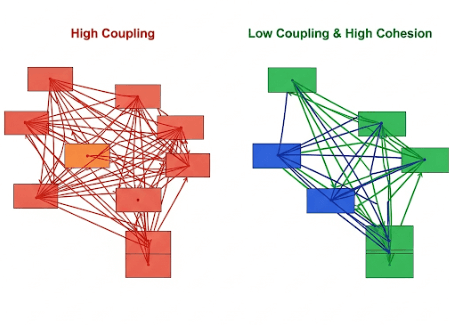- Testing Strategies
- A Strategic Approach To Software Testing
- Test Strategies for Conventional Software
- Black-Box and White-Box Testing
- Validation Testing
- System Testing
- The Art of Debugging
- Product Metrics
- Software Quality
- Metrics for Analysis Model
- Metrics for Design Model
- Metrics for Source Code
- Metrics for Testing
- Metrics for Maintenance
Introduction to Metrics for Design Model
After the analysis phase, the design model phase focuses on architectural and component-level design. Metrics for the design model are quantitative measures applied at this crucial stage to assess the quality of the software design. These metrics provide insights into characteristics such as modularity, coupling, cohesion, and overall structural complexity. By evaluating these aspects early, potential design flaws can be identified and rectified, which is significantly more cost-effective than discovering them during coding or testing. Essentially, design metrics help ensure that the architectural blueprint of the software is robust, maintainable, and aligned with quality objectives.
Importance of Design Model Metrics
Applying metrics to the design model is vital for several reasons:
- Early Quality Assessment: They allow for the evaluation of design quality before any code is written, reducing the cost of fixing potential issues.
- Improved Maintainability: Metrics like coupling and cohesion directly influence how easily software can be modified and maintained in the future.
- Risk Mitigation: Identifying complex or problematic design elements early helps in mitigating risks associated with development and future maintenance.
- Better Decision-Making: Provides objective data to guide design decisions and evaluate alternative architectural approaches.
- Enhanced Understandability: Designs with favorable metric scores are generally easier for developers to understand and work with.
Key Metrics for the Design Model
Various metrics are employed to evaluate the design model, each focusing on different structural aspects of the software.
Coupling
Coupling is a design metric that measures the degree of interdependence between different software modules. Simply put, it indicates how much one module relies on another. A lower degree of coupling is generally considered better because it implies that modules are more independent. Consequently, independent modules are easier to understand, test, and modify without inadvertently affecting other parts of the system. High coupling, conversely, makes systems brittle and harder to manage.
Cohesion
Cohesion is a design metric that measures the degree to which elements within a single module belong together or contribute to a single, well-defined purpose. High cohesion is highly desirable in software design. It means that a module is focused on performing one specific task or a set of closely related tasks. This characteristic enhances a module’s understandability, reusability, and maintainability. Therefore, a module with strong cohesion is easier to manage and less prone to errors.
Complexity Metrics
While often applied to source code, structural complexity metrics can also be inferred and assessed at the design level. For example, by analyzing the control flow within detailed design diagrams or the number of decision points in a module’s design, one can estimate its potential cyclomatic complexity. Designs exhibiting high complexity are more likely to lead to complex code, which subsequently increases the likelihood of defects and makes maintenance more challenging. Thus, identifying and simplifying complex design elements early is paramount.
Fan-in/Fan-out
These are further metrics for the design model that quantify module relationships:
- Fan-in: Measures the number of modules that call, or refer to, a given module. A high fan-in can indicate that a module is highly utilized. However, if such a module is not robustly designed, it could become a point of failure affecting many other parts of the system.
- Fan-out: Measures the number of modules that a given module calls, or refers to. A high fan-out indicates that a module is highly dependent on many other modules. This can suggest that the module is overly complex in its responsibilities or interactions, potentially making it harder to test and maintain.
Ideally, designers aim for a balance, often preferring a higher fan-in for common utility modules and a lower fan-out for modules that perform specific, focused tasks.
Conclusion
Metrics for the design model are indispensable tools for building high-quality, maintainable, and scalable software systems. By quantitatively assessing characteristics like coupling, cohesion, complexity, and inter-module dependencies early in the design phase, teams can make informed decisions. Furthermore, they can proactively identify and mitigate risks associated with structural issues. Ultimately, a strong emphasis on design metrics leads to a more robust architectural foundation, simplifying subsequent development, testing, and long-term maintenance efforts.
